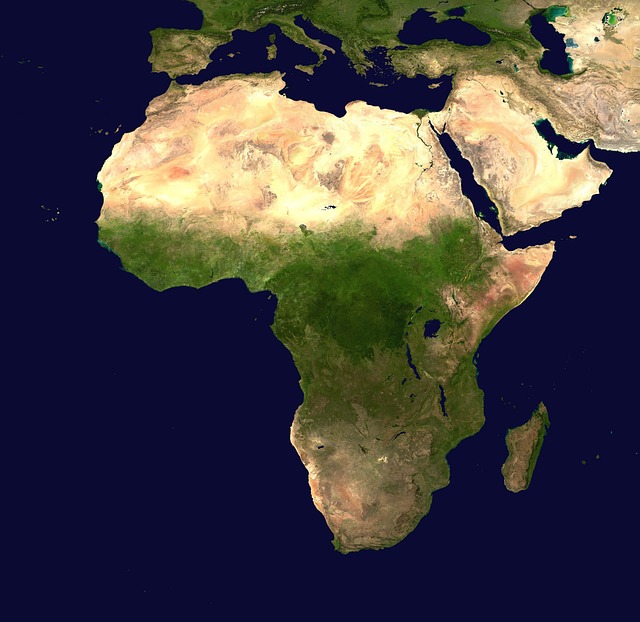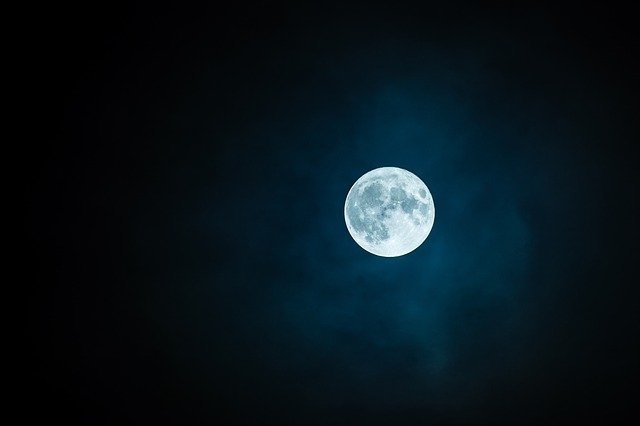*This post may contain affiliate links. This means we may make a commission if you purchase an item using one of our links*
Africa is the second largest of all Earth’s continents, whilst the Moon is the 5th largest natural satellite in the solar system. Still, there’s no comparison regarding which one is bigger as Africa is a flat land mass with a surface area of 30.3 million square kilometers and a volume of 1.12 billion cubic kilometers while the Moon is a spherical entity with a surface area of 37.9 million square kilometers and a volume of 21.92 billion cubic kilometers.
For a more thorough breakdown of the size of both bodies, continue reading as it’ll be covered in the sections below.
How Big Is The Continent Of Africa?

Africa is the Earth’s second largest continent covering a total area of approximately 30.3 million square kilometers, equal to about 20% of Earth’s total land mass or 6% of the planet’s surface area. Africa possesses the world’s largest desert, plus it has the longest river of any continent, the Nile.
Africa is the second highest populated continent on Earth. The continent has 54 countries, including Egypt, Nigeria, and Kenya, and it accounts for roughly 17% of the world’s population, with more than 1.4 billion people.
There are eight main physical regions of Africa: the Sahara, the savanna, the rainforest, the Great Lakes, the Sahel, the Ethiopian Highlands, the Swahili Coast, and southern Africa. The Sahara Desert extends over the northern third of Africa and is one of the most inhospitable places on Earth. Its size is 9.2 million square kilometers – roughly the same size as the entire United States.
The African savannah is a vast grassland that covers most of the African continent (around 65%). It extends from the Red Sea at the east to the Atlantic Ocean in the west and from Senegal in the north to Sudan in the south.
A savannah is a type of landscape that consists of grasslands with few trees, bushes, or shrubs. The grasses are typically short but can grow up to almost four meters tall. The dominant vegetation is acacia and baobab trees, which provide shade and shelter for animals during daytime hours.
Africa possesses some of the world’s highest mountains; Mount Kilimanjaro is the tallest, which rises 19,341 feet from its base near the equator to its peak in Tanzania. Africa extends to a length of 8,000km between its northern and southern extremities in Tunisia and South Africa; its width of 7,400km stretches from Xaafuun Point in Somalia to Almadi Point in Senegal.
The thickness of Earth’s crust ranges from 5 to 70km and is generally thicker under continental land where it averages 40km. Taking this figure and multiplying it by Africa’s surface area, we can calculate the rough volume of the continent at 1.21 billion cubic kilometers. This might sound like a sizable volume, but it’s no match for the almost 22 billion cubic kilometers of the Moon’s volume.
How Big Is The Moon?

The moon has a surface area of 37,936,695 sq. km, which is about 1.25 times the area of Africa. While this celestial body may appear to be a perfect sphere, it is an oblate spheroid which means that the diameter is slightly less when you measure it pole to pole instead of across the equator.
The moon’s volume, when we look at its entire body, is 21,971,669,064 cubic kilometers. The crust is thicker than the Earth’s crust, which is pretty significant if you’re comparing the size of these two bodies. The moon’s crust is between 60 and 100 kilometers thick.
Even if we take the moon’s crust at its thinnest, the total area tops two billion cubic kilometers, which is still significantly bigger than the volume of the Africa.
Viewing the moon, you can see the mix of dark lunar plains and bright mountainous highlands. Early observations led scientists to believe that the dark areas could represent water, but we have since discovered that there is no water on this airless surface.
Earth mountains are created through tectonic or volcanic action. In comparison, the moon’s mountainous ranges formed almost exclusively from the impact of crater collisions.
There are three significant mountain ranges on the moon: the Montes Caucasus and Montes Apenninus create a barrier between the Sea of Serenity and the Sea of Showers. And in the northwest, the Plato crater is encased by the Montes Alpes (lunar Alps).
Summary
Despite the fact that Africa is the second largest body on Earth, it is still a good bit smaller than our Moon. After all Africa is a flat land mass which means that in overall volume it cannot compare to the Moon’s over all breadth.
Even if it is bigger than the Moon in diameter, the Moon really dwarfs Africa when it comes to surface area and certainly in regards to volume.


